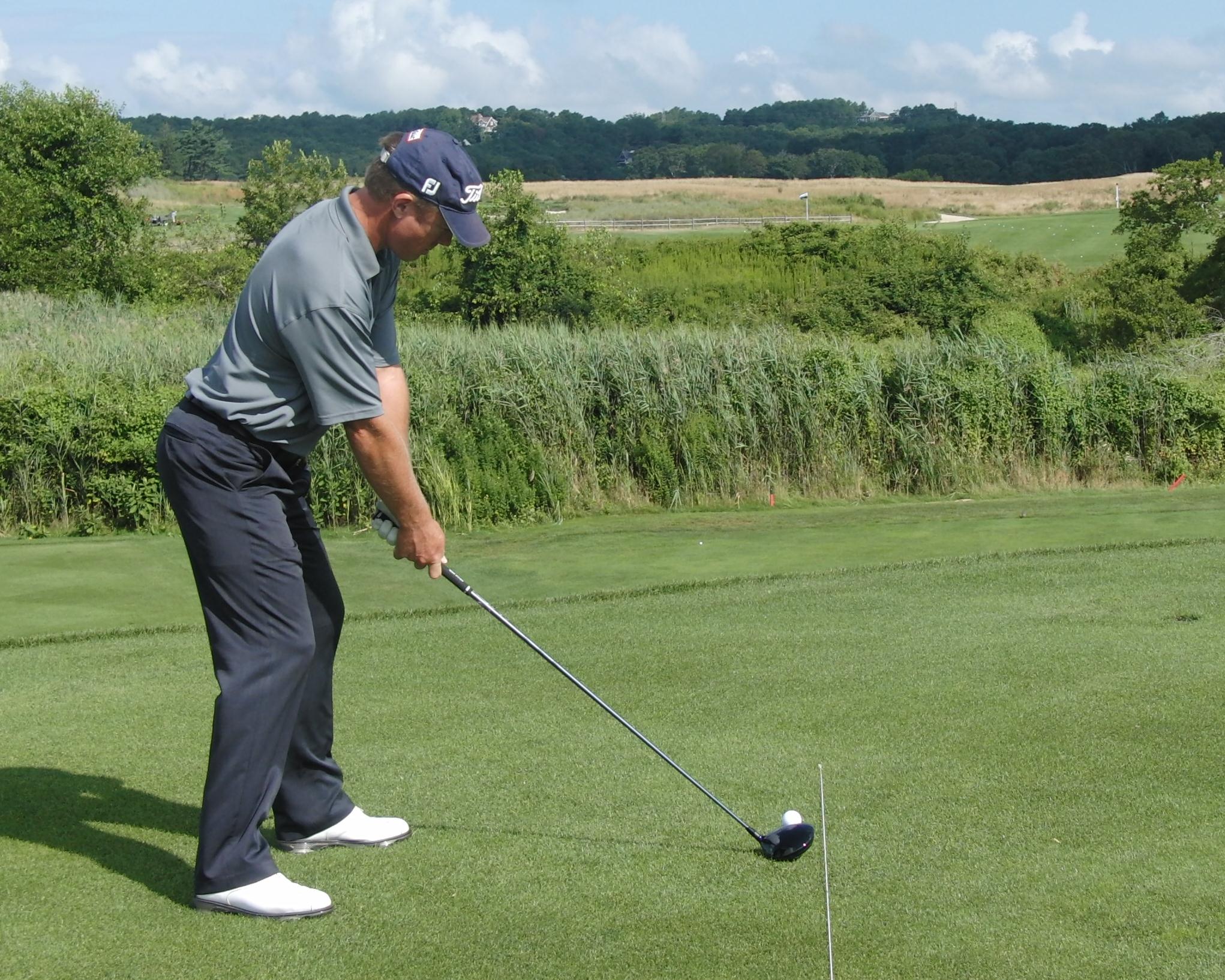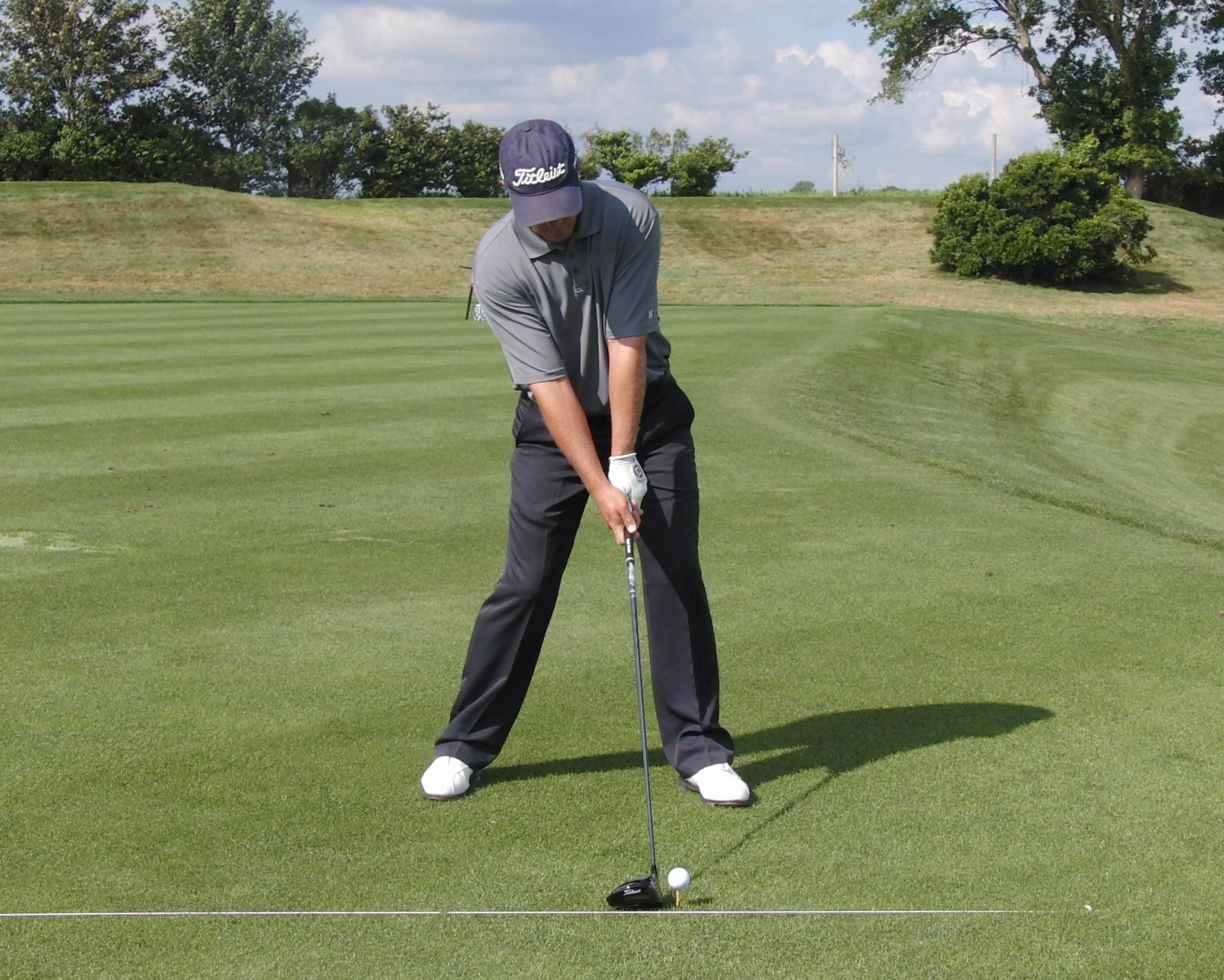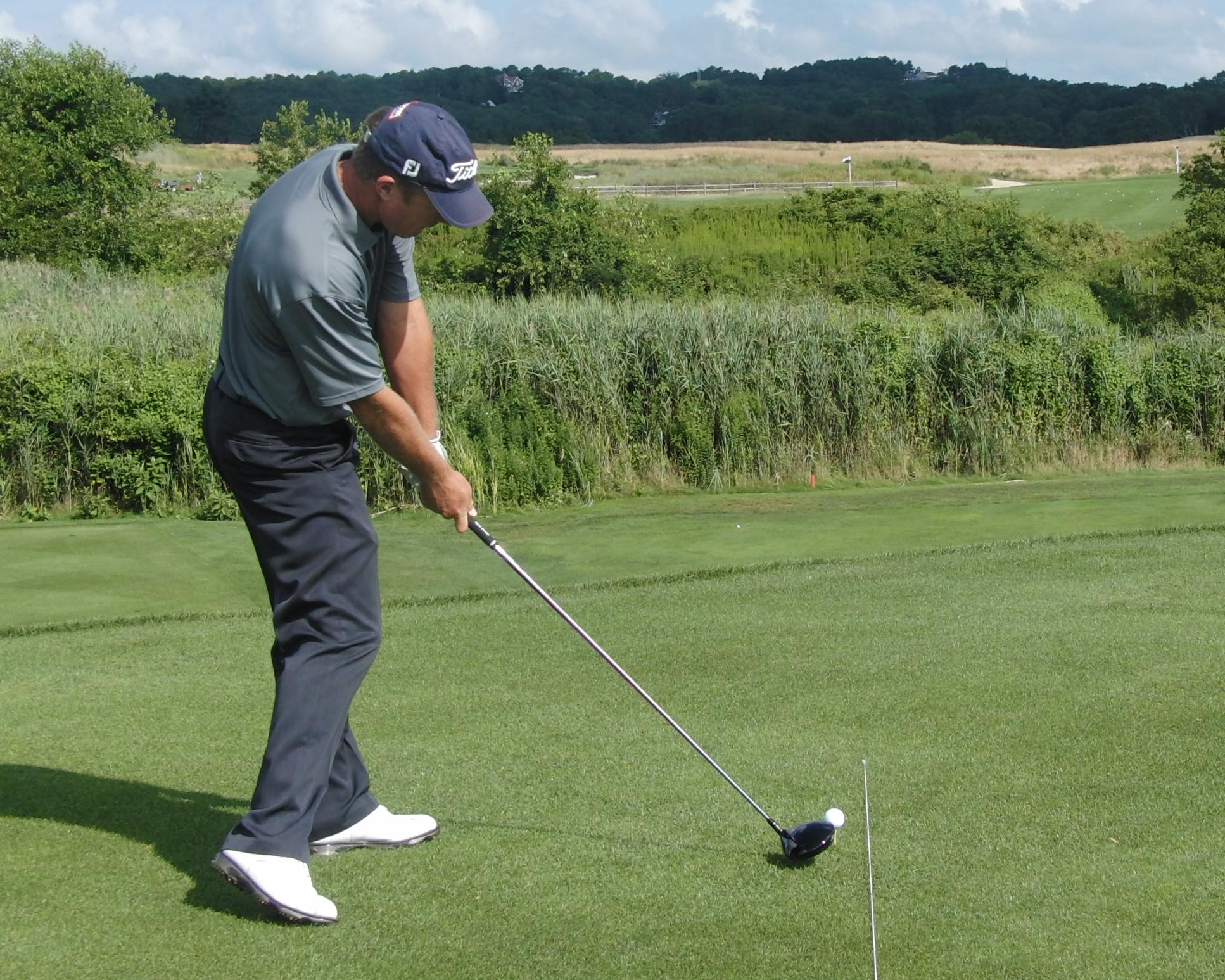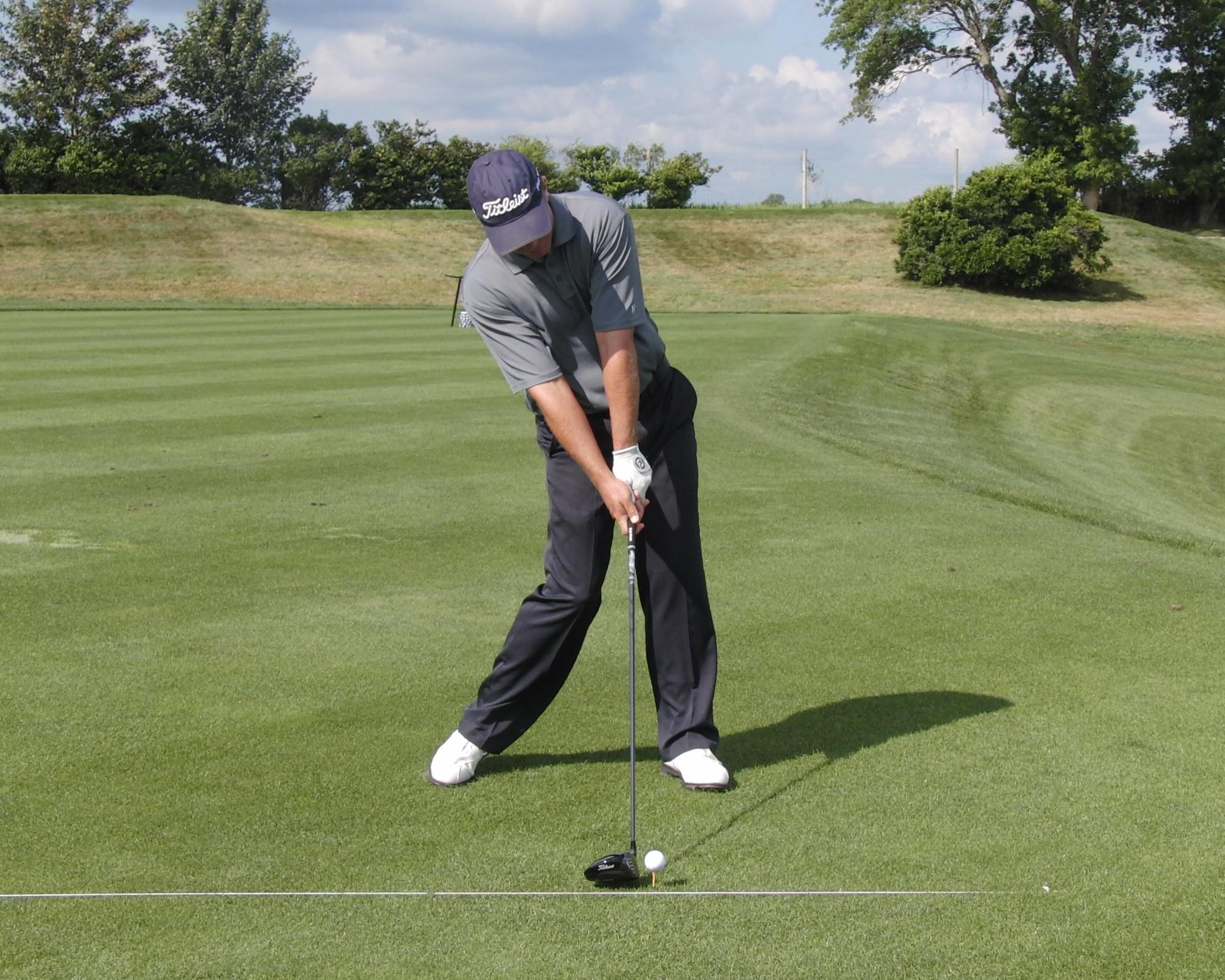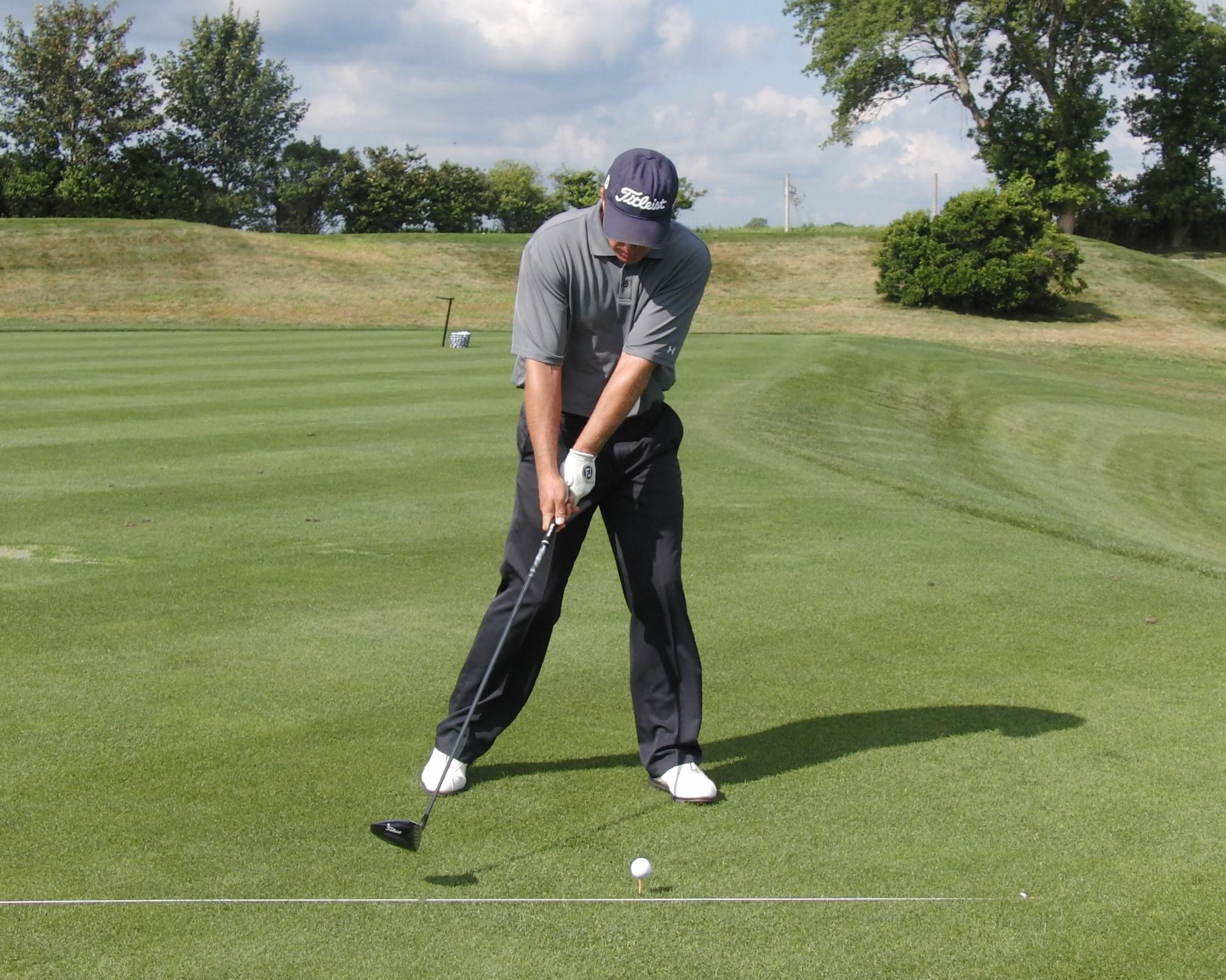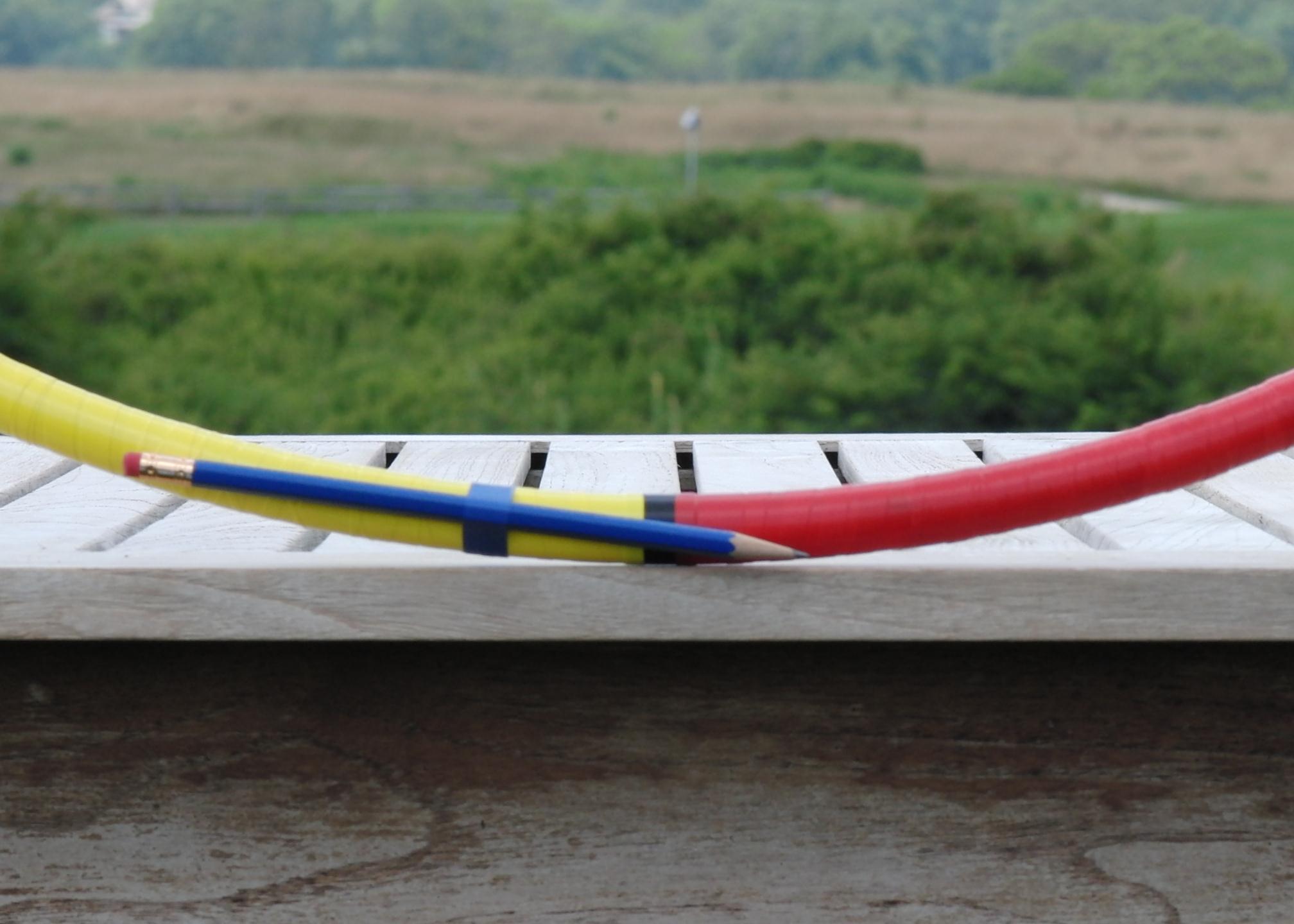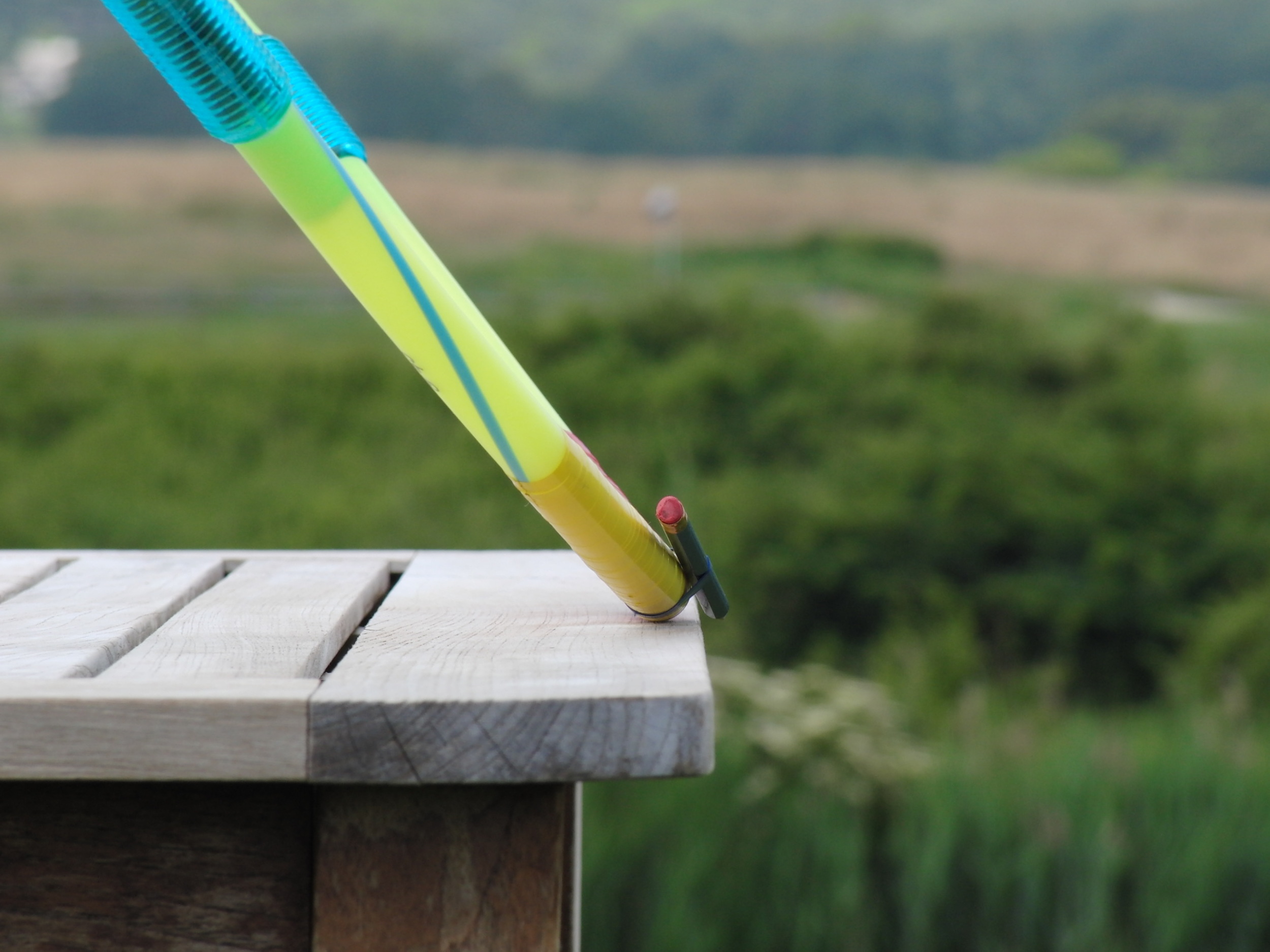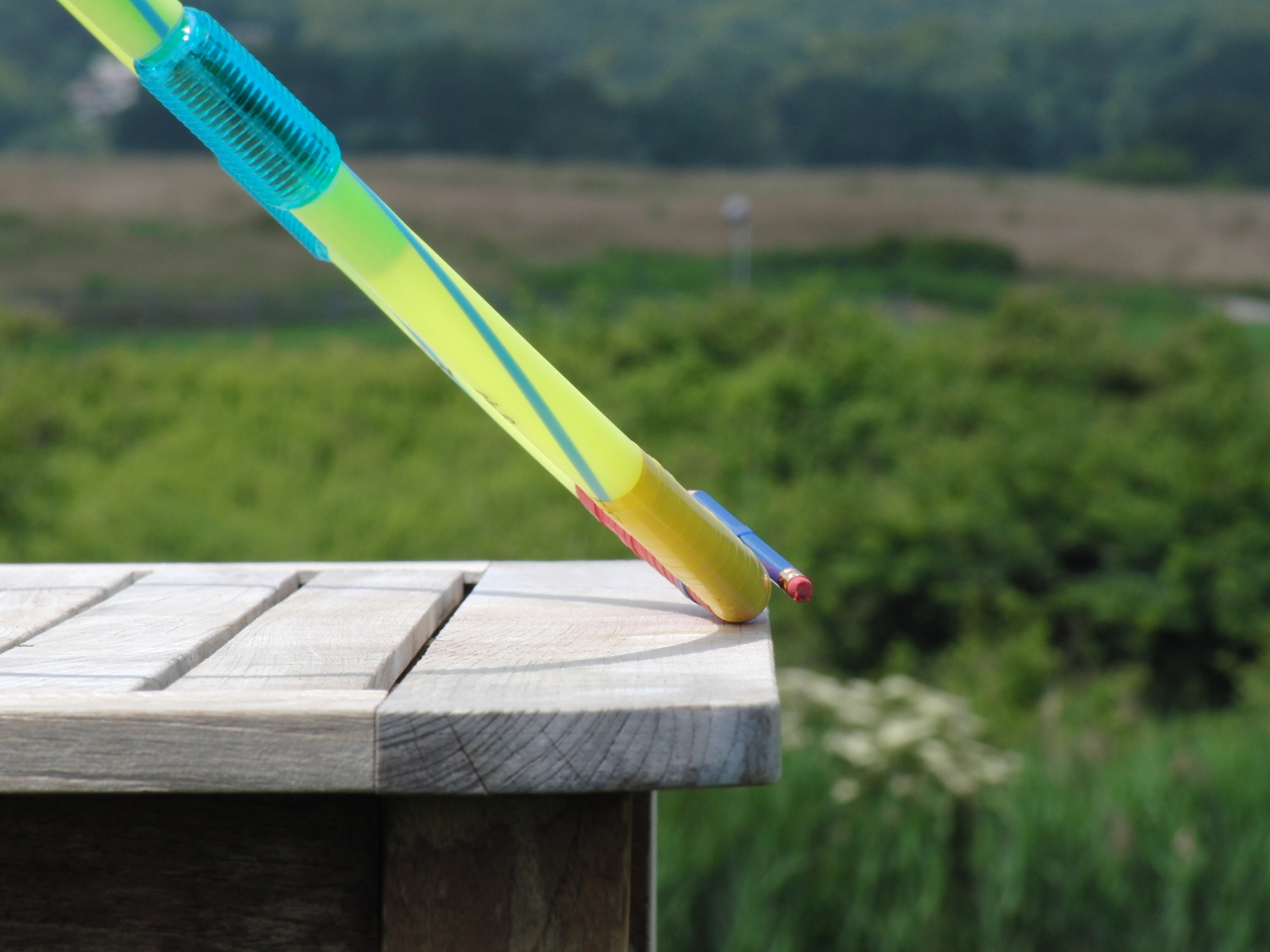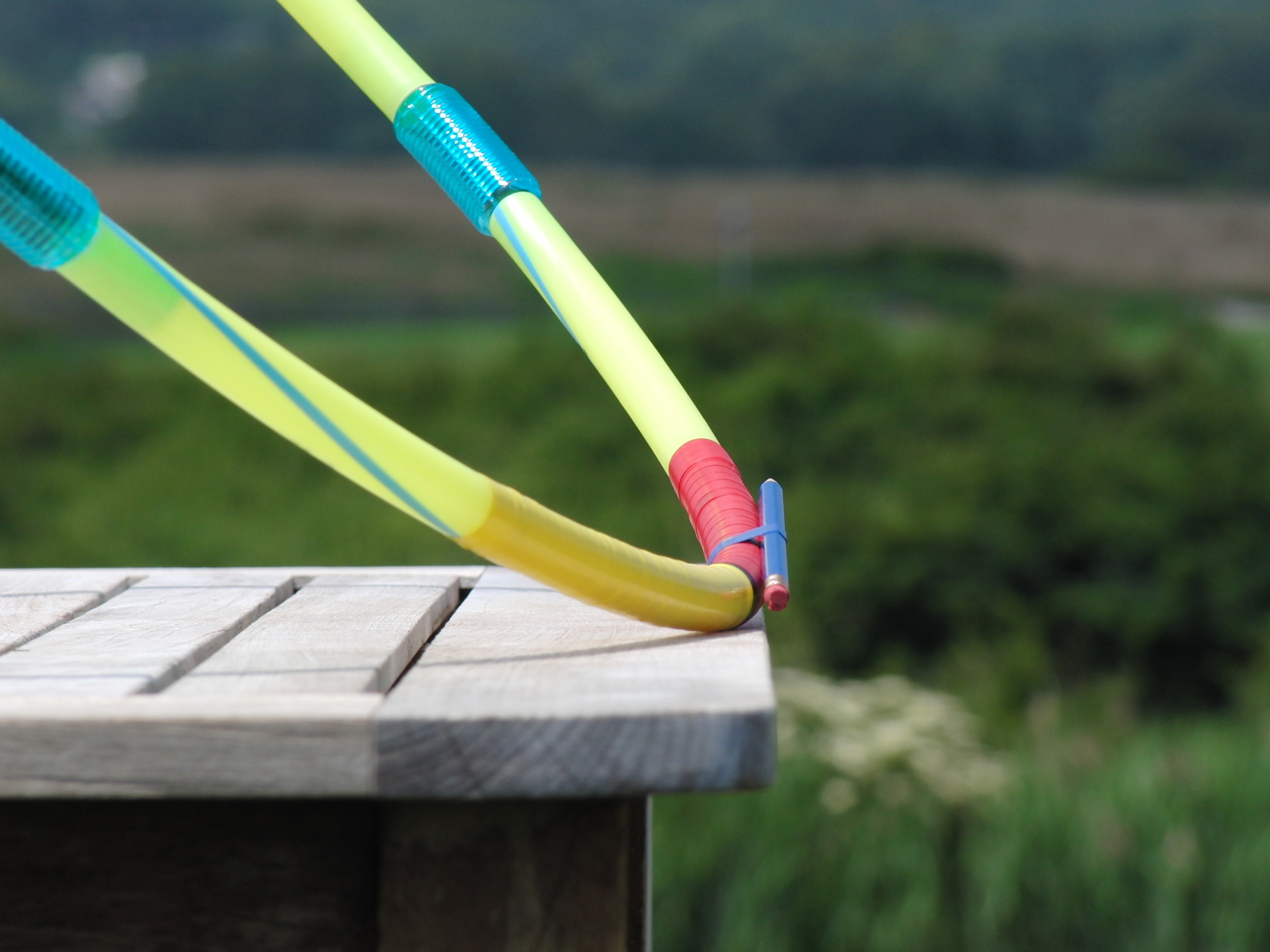Getting More Out of Your Driver
/
Let's start at address: In order to move your swing plane to facilitate an in-to-out path drop your back foot and shoulder inside the target line - basically set up with a slightly closed stance.
Tee the ball high and make sure it is not too far back in your stance. You should have a sense that you are behind the ball and are preparing to "swing uphill" as you get set.
In the swing you will need to feel that you are staying behind the ball with your upper body as you aggressively drive the hips and weight over onto the front foot. This is where the "uphill" sense comes from - as the hips drive the head stays back you create the body motion that allows for the clubhead to move up into the hit. I like to refer to this as body curve.
Believe it or not when you hit 5 degrees from the inside, coupled with 5 degrees up on the ball the clubhead is travelling straight at the target at impact (assuming you aligned correctly of course)! A fantastic recipe for long and efficient tee shots.
If you cannot seem to get the sense or feel for hitting up on the ball it could well be that your are working your body incorrectly through impact. It is very common for golfers with tight hips or general flexibility problems to overuse the upper body and try to muscle the hit with their arms. This will always result in a downward, spinny strike on the ball. You may also need to consult with a golf specific fitness trainer to help you become more physically able to get your body into the correct position.


